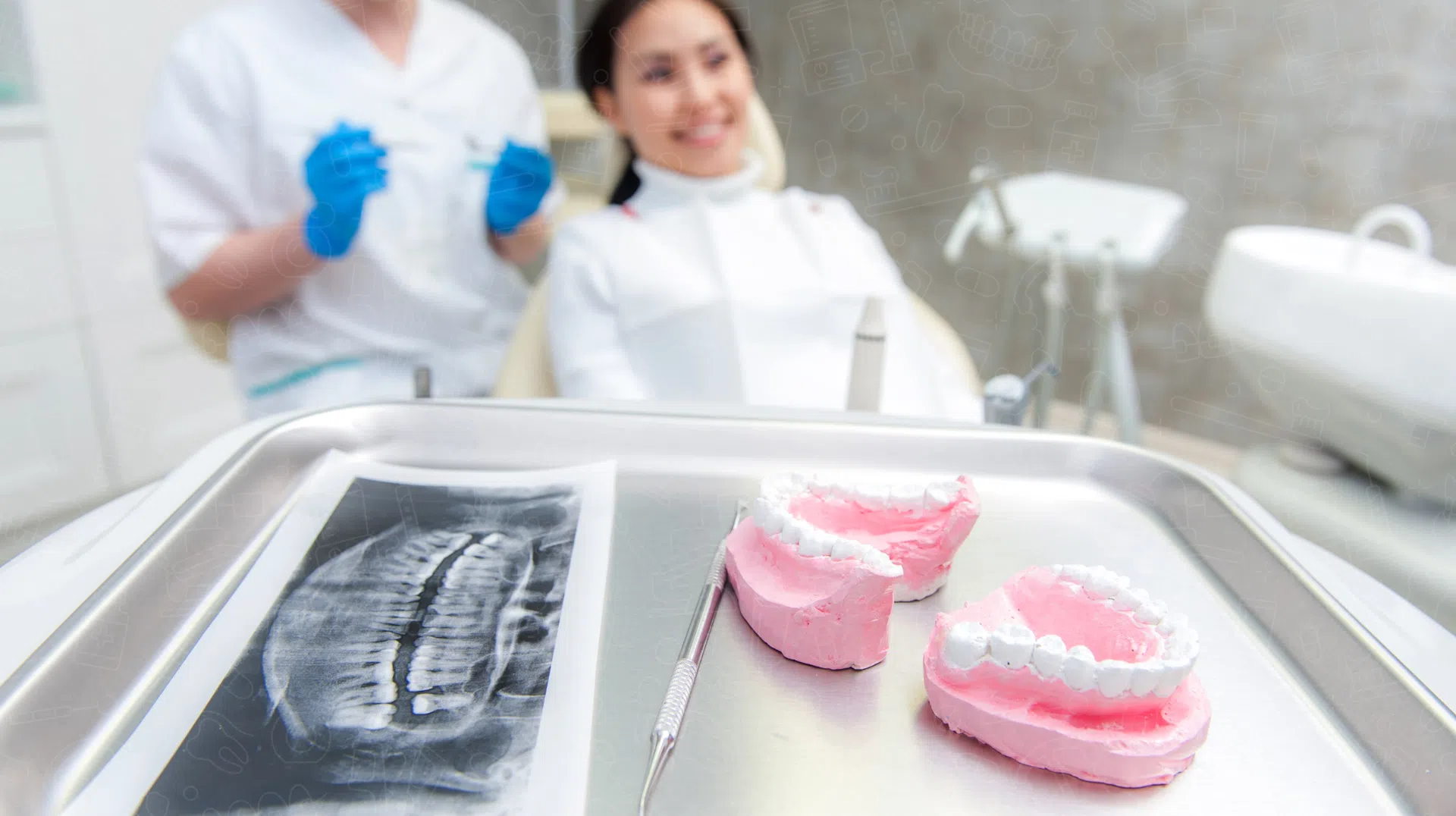Introduction
Brief Overview of Dental Bonding
Dental bonding is a popular cosmetic dental procedure that involves the application of a tooth-colored resin material to repair and improve the appearance of teeth. This versatile treatment can address a variety of dental issues, from minor chips and cracks to discoloration and gaps. The resin is carefully molded and polished to match the surrounding teeth, resulting in a natural and aesthetically pleasing smile.
Importance of Cosmetic Dentistry
Cosmetic dentistry plays a crucial role in enhancing the appearance and function of teeth. It goes beyond the basics of oral health, focusing on the aesthetics of the smile. Procedures like dental bonding can significantly boost a person’s confidence by improving their smile, making cosmetic dentistry an essential aspect of modern dental care.
Promise of Immediate Transformation
One of the most appealing aspects of bonding in dentistry is its ability to transform smiles almost instantly. The procedure is typically completed in a single visit, allowing patients to see immediate improvements. This quick and effective solution makes teeth bonding a popular choice for those seeking rapid enhancements to their smile.
Understanding Dental Bonding
Definition and Explanation
Dental bonding is a cosmetic procedure that involves applying a composite resin material to the surface of a tooth. The resin is shaped and polished to improve the tooth’s appearance, providing a natural-looking result. Dental bonding is a versatile treatment that can address a range of cosmetic concerns, including chips, cracks, gaps, and discoloration.
How Bonding in Dentistry Works
The teeth bonding process begins with the selection of a resin color that closely matches the natural teeth. The tooth surface is then roughened slightly to ensure better adhesion of the resin. After applying an adhesive, the dentist layers the resin onto the tooth, shaping it to achieve the desired look. Once the resin is in place, it is hardened using a special curing light. Finally, the bonded tooth is polished to match the sheen of the surrounding teeth.
Common Uses in Cosmetic Dentistry
Dental bonding is commonly used for:
- Repairing chipped or cracked teeth
- Closing gaps between teeth
- Reshaping irregular teeth
- Covering discolored or stained teeth
- Protecting exposed tooth roots
The Dental Bonding Process
Initial Consultation and Assessment
The process begins with a consultation and assessment by the dentist. During this visit, the dentist evaluates the patient’s dental health and discusses their cosmetic goals. This step ensures that teeth bonding is the appropriate treatment for the patient’s needs.
Preparation of the Tooth
Before applying the resin, the dentist prepares the tooth by cleaning it thoroughly and roughening the surface. This preparation helps the bonding material adhere better to the tooth.
Application of Composite Resin
The dentist applies the composite resin to the prepared tooth in layers. Each layer is carefully molded and shaped to achieve the desired contour and appearance.
Curing Process
Once the resin is shaped, a special curing light is used to harden the material. This light activates the resin, causing it to bond firmly to the tooth.
Final Shaping and Polishing
After the resin is hardened, the dentist makes final adjustments to the shape and contour of the bonded tooth. The tooth is then polished to achieve a smooth and natural-looking finish.
Shocking Benefits of Dental Bonding
Immediate Results
One of the most significant benefits of teeth bonding is the immediate transformation it offers. Patients can leave the dental office with a noticeably improved smile after just one visit.
Quick Procedure with Instant Visible Changes
The entire teeth bonding process usually takes about 30 to 60 minutes per tooth, making it a quick solution for cosmetic dental concerns.
Aesthetic Improvement
Enhancing the Appearance of Teeth
Dental bonding can dramatically enhance the appearance of teeth by addressing imperfections such as chips, cracks, and discoloration.
Customizable to Match Natural Teeth
The composite resin used in dental bonding is available in various shades, allowing the dentist to perfectly match the color of the natural teeth.
Versatility
Uses in Repairing Chips, Cracks, and Gaps
Teeth bonding is highly versatile and can be used to repair minor chips, cracks, and gaps in teeth.
Whitening and Reshaping Teeth
The procedure can also be used to whiten teeth and reshape them for a more uniform appearance.
Cost-Effectiveness
Affordable Alternative to Other Cosmetic Procedures
Dental bonding is a cost-effective alternative to other cosmetic procedures such as veneers and crowns, providing similar aesthetic benefits at a lower cost.
Minimal Invasiveness
Preservation of Natural Tooth Structure
Dental bonding is minimally invasive, requiring little to no removal of the natural tooth structure, which helps preserve the integrity of the teeth.
Boost in Confidence
Immediate Improvement in Smile and Self-Esteem
The immediate improvement in the appearance of the smile can significantly boost a patient’s confidence and self-esteem.
Long-Term Care and Maintenance
Proper Oral Hygiene Practices
Maintaining proper oral hygiene is essential for the longevity of bonded teeth. Regular brushing, flossing, and dental check-ups are crucial.
Avoiding Habits That Can Damage Bonded Teeth
Patients should avoid habits that can damage bonded teeth, such as biting nails, chewing on hard objects, and consuming staining foods and drinks.
Regular Dental Check-Ups and Cleanings
Regular dental visits ensure that bonded teeth remain in good condition and any potential issues are addressed promptly.
Comparing Dental Bonding to Other Cosmetic Procedures
Dental Bonding vs. Veneers
Veneers are thin shells that cover the front surface of teeth, offering superior aesthetics but at a higher cost and with more invasive preparation compared to bonding.
Dental Bonding vs. Crowns
Crowns cover the entire tooth, providing greater protection and durability but requiring more extensive tooth reduction than bonding.
Dental Bonding vs. Teeth Whitening
Teeth whitening is a non-invasive procedure that brightens teeth, but it does not address structural issues like bonding does.
Who Can Benefit from Dental Bonding?
Ideal Candidates for the Procedure
Ideal candidates for dental bonding include individuals with minor cosmetic imperfections, such as chips, cracks, gaps, and discoloration.
Addressing Common Dental Issues
Dental bonding can effectively address a variety of common dental issues, making it a versatile solution for many patients.
Considerations and Limitations
While dental bonding is suitable for many patients, it may not be the best option for those with extensive dental damage or severe alignment issues.
Conclusion
Dental bonding offers numerous benefits, including immediate results, aesthetic improvements, versatility, cost-effectiveness, and minimal invasiveness.
Patients seeking quick and effective smile enhancements should consider teeth bonding as a viable option.
Consulting with a dentist can help determine if dental bonding is the right choice for achieving a beautiful and confident smile.





